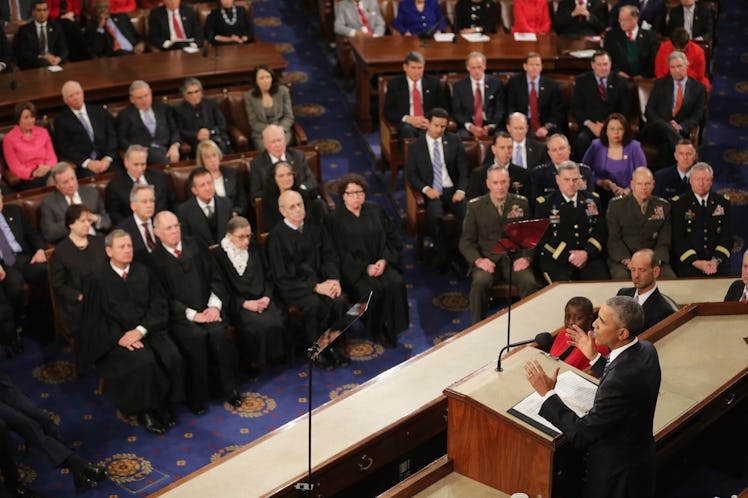
It's Going To Be A While Until The Next State Of The Union Speech, So Relax
President Donald Trump delivered his first State of the Union (SOTU) address as president on Tuesday, Jan. 30. For those that are bursting with anticipation for Trump's next public address, you may be wondering, when's the next State of the Union? Typically, it happens every January.
The speech historically happens every year during a president's time in office, except during the first calendar year of an administration. Hence why Trump did not give a SOTU last January when he was elected. This is because the SOTU is an opportunity for the president to literally tell the public the state of the country, and Trump would not have been able to adequately do so having only been a few weeks into his presidency. The president also cannot just show up to give his address. He has to be formally invited by the House speaker, which is currently Paul D. Ryan. So we'll know the exact date of the next SOTU after the next invitation is made, which typically happens in the fall.
According to the National Archives, George Washington gave his first ever "annual message" to Congress on Jan. 8, 1790, in the Senate Chamber of Federal Hall in New York City, which at the time, served as the house of chambers for government. The third President of the United States, Thomas Jefferson, decided to go rogue and deliver his State of the Union address in writing, rather than a oral speech. The written State of the Union was adopted for some 100 years, until President Woodrow Wilson spoke in person to a joint session of Congress in 1913, according to the Archives. It wasn't called the "State of the Union" address until President Franklin D. Roosevelt coined the term, according to the Senate Historical Office, and it was made the official name for the address by President Harry Truman.
Trump did deliver a similar speech last year, but it was just a joint address before Congress. A joint address is given in the same way as the State of the Union — standing at the same podium, at the same chamber of the House of Representatives on Capitol Hill, and with the vice president over his right shoulder and the speaker of the House over his left.
So what's the difference? Not much, other than the title that is described in the U.S. Constitution. In Article II, Section 3 states, "He shall from time to time give to the Congress information of the state of the union, and recommend to their consideration such measures as he shall judge necessary and expedient."
President Bill Clinton found it necessary to give a one hour, 28 minutes, and 49 seconds State of the Union address in 2000, setting the record for the longest State of the Union address according to the American Presidency Project at the University of California at Santa Barbara. The shortest address to date was President George Washington in 1790, which is believed to have lasted only 10 minutes. It seems the union itself was not largely developed in 1790, so what more could a president have to say about its condition?
Another tradition for the SOTU is the designated survivor. It was decided that one member of the president's cabinet would stay behind and not attend the speech each year in case of emergency. On the night of the SOTU, the designated survivor travels to a discrete, distant, and undisclosed location outside of Washington, while everyone else joins the president at the Capitol, according to CNN.
We can all expect President Trump to give his second State of the Union address next January, 2019. That is, if one of the many forces that are trying to impeach him have not succeeded by then. Let's hope by then, the state of our union is better than it is now.